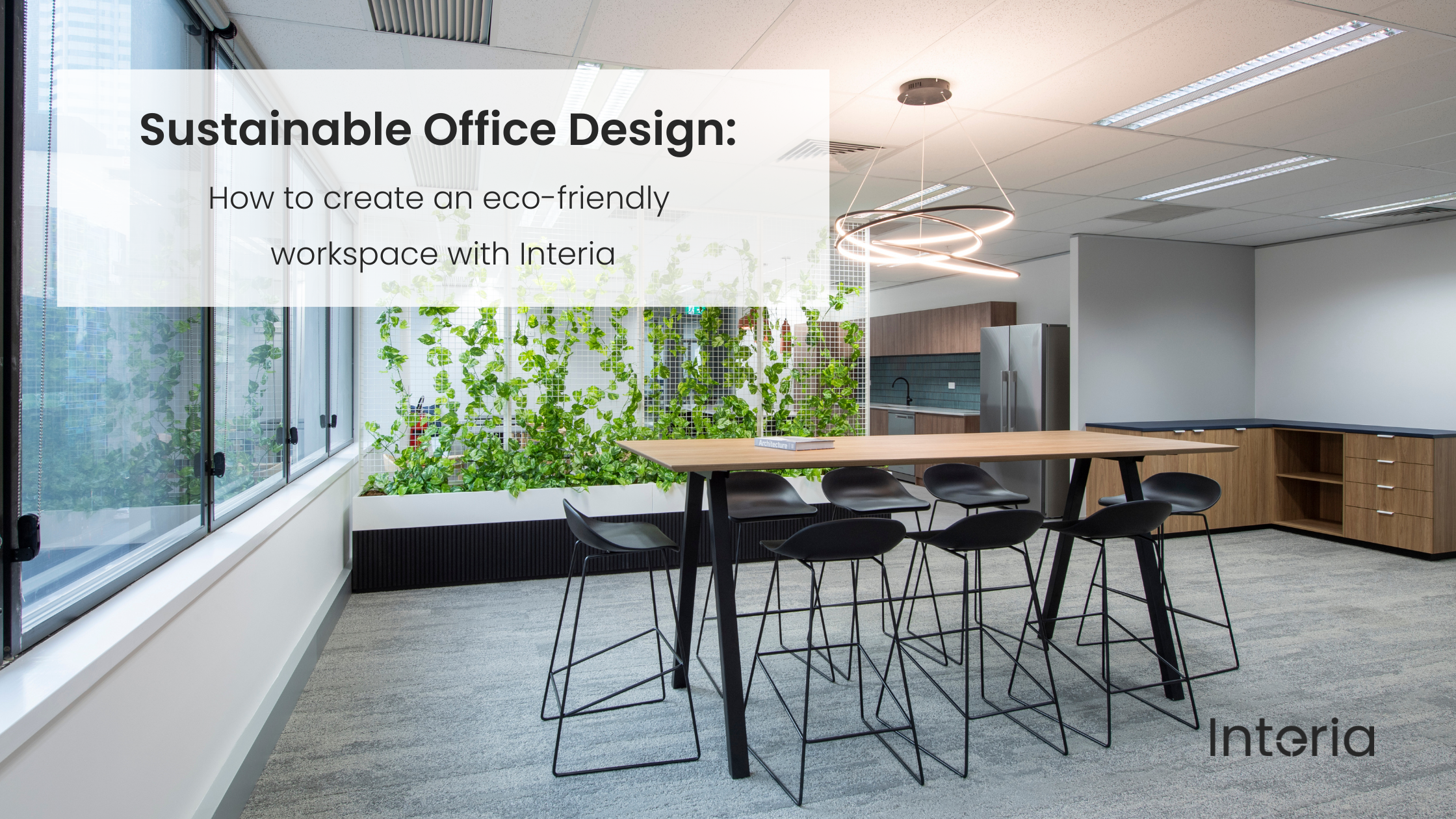
Sustainable Office Design: How to Create an Eco-Friendly Workspace with Interia
Creating a sustainable office design and eco-friendly workspace is essential for businesses looking to reduce their environmental footprint and promote sustainability. Sustainable office design not only benefits the planet but also enhances employee well-being and can even lead to cost savings over time.
Here’s how you can create a sustainable office design space with the right materials and energy-efficient furniture.
Importance of Sustainable Office Design
Sustainability in office design is crucial for several reasons:
1. Environmental Impact: Reducing waste and using sustainable materials helps lower the carbon footprint of your office.
2. Health and Well-being: Eco-friendly materials often have fewer toxins, improving indoor air quality and contributing to a healthier work environment.
3. Cost Efficiency: Energy-efficient furniture and appliances can lead to significant cost savings on utility bills.
4. Corporate Image: Demonstrating a commitment to sustainability can enhance your brand’s reputation and attract eco-conscious clients and employees.
Tips for Selecting Eco-Friendly Materials
1. Recycled and Upcycled Materials: Choose furniture made from recycled materials or repurpose existing items to reduce waste.
2. Sustainable Wood: Opt for furniture certified by the Forest Stewardship Council (FSC) to ensure it’s sourced from responsibly managed forests.
3. Low-VOC Paints and Finishes: Use paints and finishes that emit low levels of volatile organic compounds (VOCs) to improve indoor air quality.
4. Natural and Biodegradable Materials: Consider materials like bamboo, cork, and natural fibers that are renewable and biodegradable.
Energy-Efficient Furniture and Appliances
1. LED Lighting: Replace traditional light bulbs with LED lights, which use significantly less energy and have a longer lifespan.
2. Energy Star-rated Appliances: Choose appliances and electronics that are Energy Star certified to ensure they meet energy efficiency guidelines.
3. Smart Power Strips: Use smart power strips to reduce energy consumption by automatically turning off idle devices.
4. Ergonomic and Adjustable Furniture: Invest in furniture that supports ergonomic principles to enhance comfort and productivity while being made from sustainable materials.
Implementing Sustainable Office Design Practices
1. Waste Reduction: Implement a recycling program and encourage paperless operations to reduce waste.
2. Energy Management: Use smart thermostats and lighting systems to optimize energy use throughout the day.
3. Green Certifications: Aim for certifications like LEED (Leadership in Energy and Environmental Design) to showcase your commitment to sustainability.
By integrating these sustainable practices and choosing eco-friendly materials and furniture, you can create a workspace that is both environmentally responsible and conducive to a healthy, productive work environment.
For more information on sustainable office solutions, visit Interia’s Environmental Sustainability page. Interia is committed to providing eco-friendly office furniture and design solutions that align with your sustainability goals.



